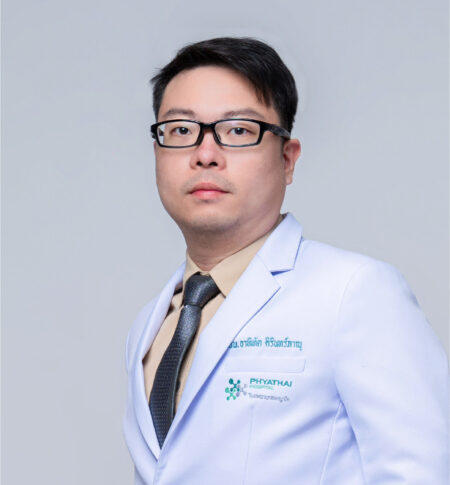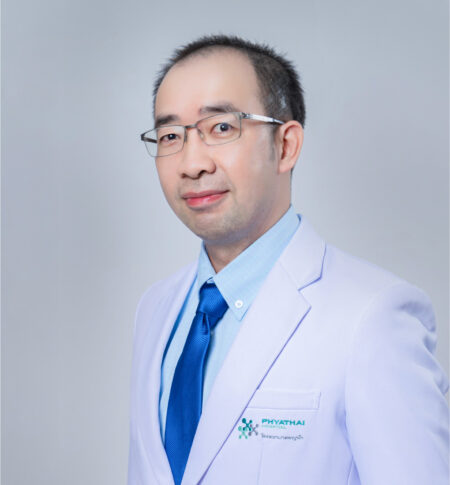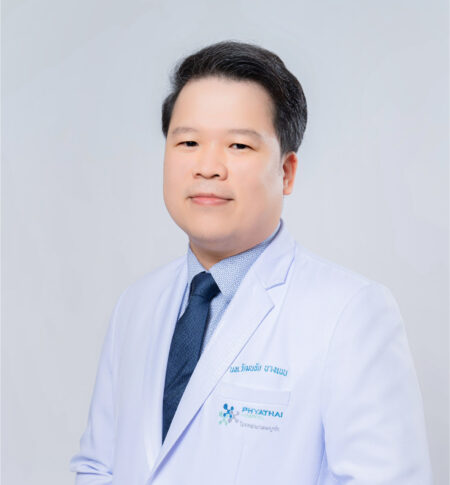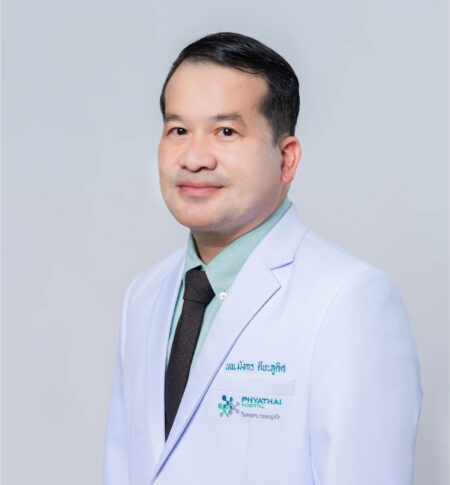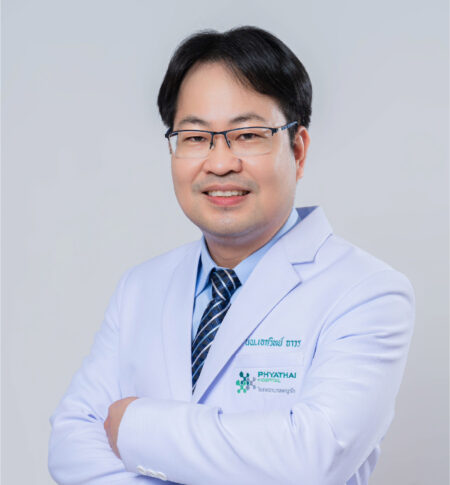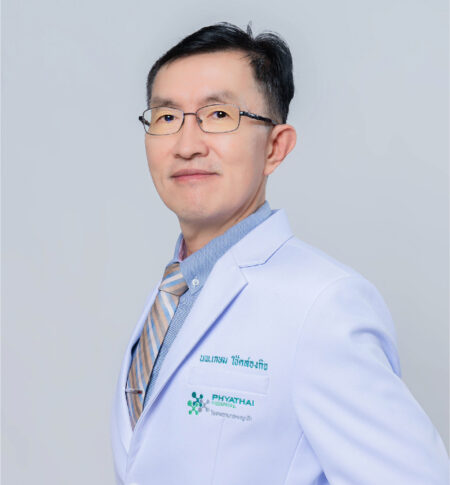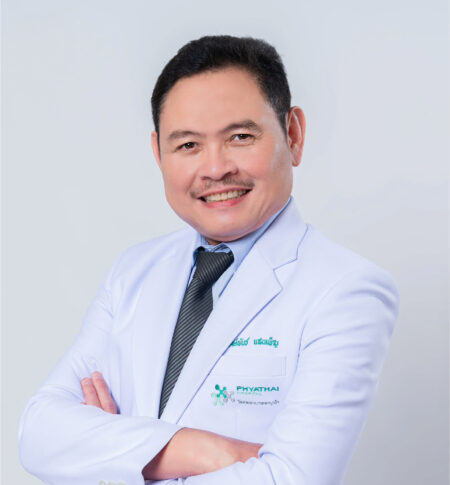
Dr. Arthithat Kirinpanu
We use our feet and ankles for walking and carrying out our daily activities, but sometimes we may overlook their importance. However, if we imagine a day when we hurt one leg or foot, even just one side, it would be challenging to continue with our daily activities.
On the other hand, if we hurt one arm or hand, we can still function reasonably well with the other, compared to the difficulties caused by a leg or foot injury. Therefore, feet are considered vital organs for our daily lives, as they form the foundation for walking. If we were to lose this function, life would become immensely difficult. For this reason, some doctors choose to specialize in the field of foot and ankle skeletal studies to provide better assistance to patients.
Dr. Arthithat Kirinpanu completed his Bachelor of Medicine degree from Chulalongkorn University and then pursued further studies in orthopedic surgery, particularly focusing on the foot and ankle, at the Institute of Orthopedics, Lerdsin Hospital. He further advanced his expertise in foot and ankle surgery at Phramongkutklao Hospital. Currently, Dr. Arthithat is a specialized orthopedic surgeon with a particular interest in treating foot skeletal issues at Phyathai Sriracha Hospital, where he has worked for over six years. He shared his inspirations and experiences during his academic journey:
“On a personal level, I enjoy treating things that have a concrete form and are clearly tangible. Treating skeletal issues aligns well with this preference. For instance, bone fusion is a treatment we can visibly see, and once it is successfully fused and set, it can function just like before. This is different from some diseases where we cannot grasp their characteristics. Dealing with foot and ankle problems is like being a craftsman; it involves inventing and repairing, similar to fixing a jigsaw puzzle. It is a profession that combines medical knowledge with artistry in patient care, which I find challenging and fascinating.”
Specialist Doctors for Expert Treatment in Each Area
Due to a relatively high number of patients each year, Phyathai Sriracha Hospital has prepared itself by forming teams of specialist doctors in various fields to accommodate the treatment needs. In the case of an accident, it is possible that the patient may have issues with more than one organ. The readiness of specialist and sub-specialist doctors enables them to treat and operate on patients simultaneously in different areas. This is considered one of the strengths of the hospital.
Moreover, patient care in the department of muscular, skeletal, and joint diseases involves quick and convenient communication between the medical team, nurses, and patients, such as using the LINE app for immediate patient contact, appointment notification systems, or telemedicine for some conditions where patients don’t need to visit the hospital every time. For instance, for gout patients, there is a telemedicine system for consulting on symptoms and treatment progress. Additionally, medication is also delivered via postal services. Dr. Arthithat is known to be a highly skilled and caring physician for patients.
“A doctor takes care of patients as if they were our family or friends. The principle of Do-No-Harm is crucial in medical ethics, meaning that any action taken for the patient should not only be beneficial but also avoid causing harm.
Regarding patients, I would like to emphasize the importance of caution in both work and sports to prevent accidents. No matter the risky activity, standard protective gear should always be worn. If an accident occurs, even if it seems minor, I encourage patients to get checked at the hospital. Many times, we find internal injuries that are not visible to the naked eye and require medical examination, like in cases of ankle swelling, where a detailed examination revealed internal ligament tears that needed appropriate treatment.”
A Physician Dedicated to the Medical Ethic of Do-No-Harm
Over the past six years, Dr. Arthithat has provided extensive foot care for patients, ranging from general cases to severe ones that are challenging to treat. He shared a recent case as an example:
“This patient is approximately 50 years old and came with deformed feet due to a previous untreated accident, leading to chronic symptoms over the years. Even at a glance, the feet appeared significantly misshapen, and diagnostic tests, including X-rays, confirmed the severity of the condition. I informed the patient directly that surgery carried considerable risks and explained the potential benefits, drawbacks, and expected outcomes of the treatment. The patient chose to undergo surgery because without it, they would not be able to bear weight on their feet and live a normal life or work.
The surgery for this case was time-consuming as it involved transplanting bones from the hip to the foot and required significant structural adjustments. However, the surgery was successful, and the patient recovered well. They can now walk straight and live a normal life. From this case, I learned once again that in extremely challenging cases, doctor-patient understanding is crucial. When patients understand the treatment process and have confidence in their physician, it helps them go through the process smoothly.
